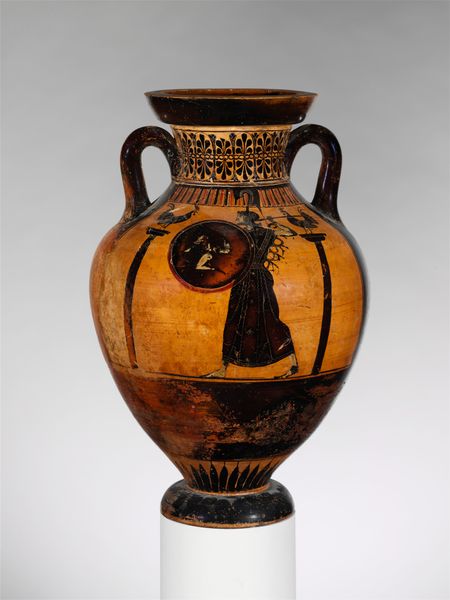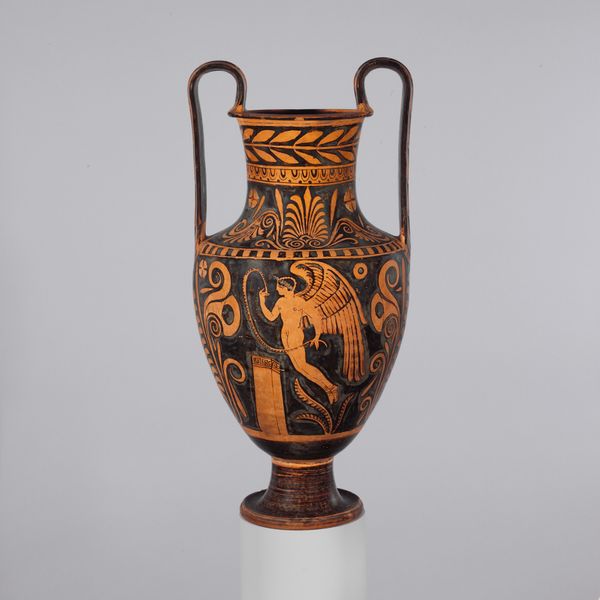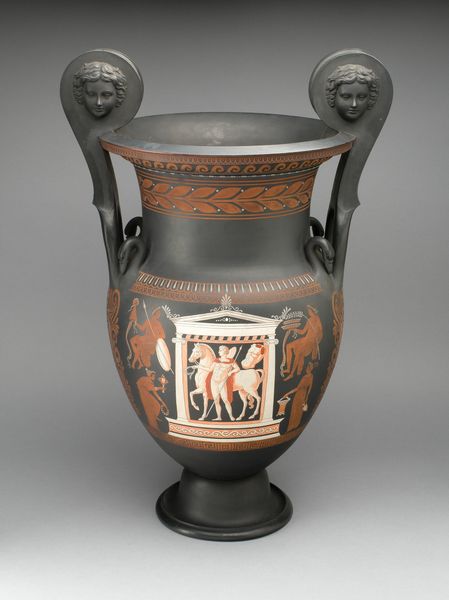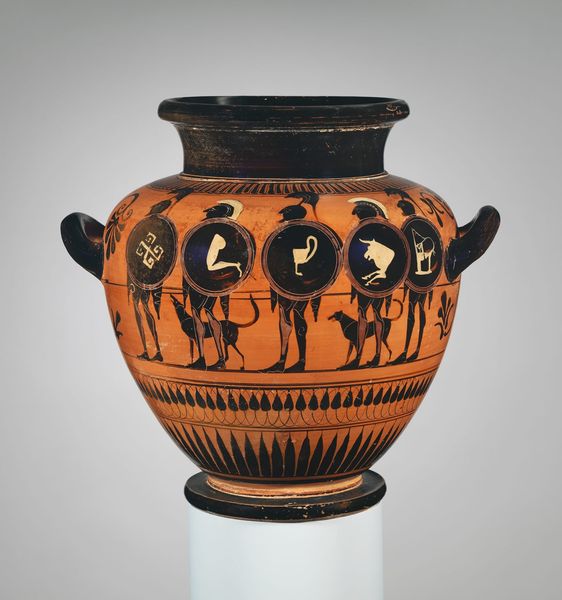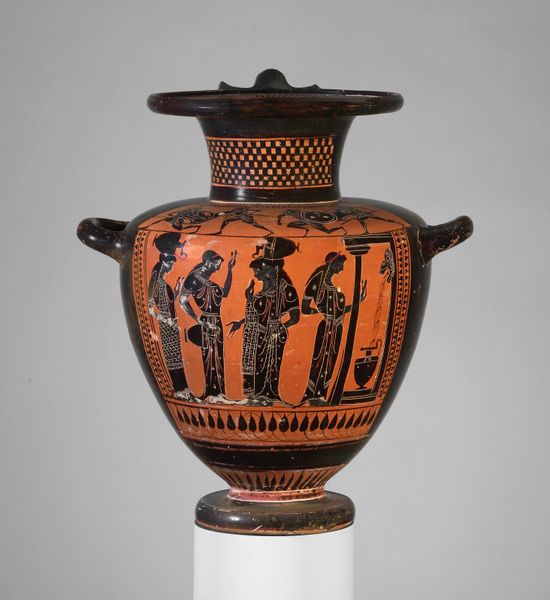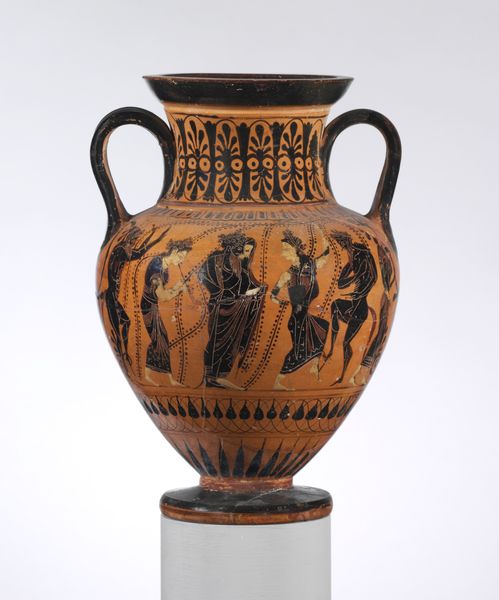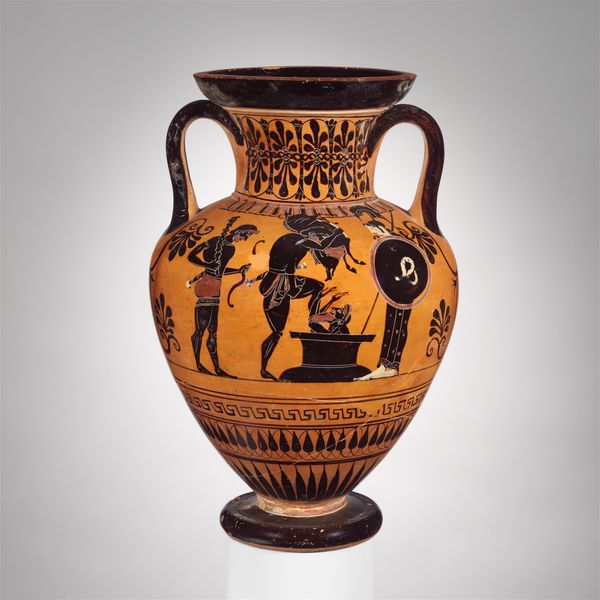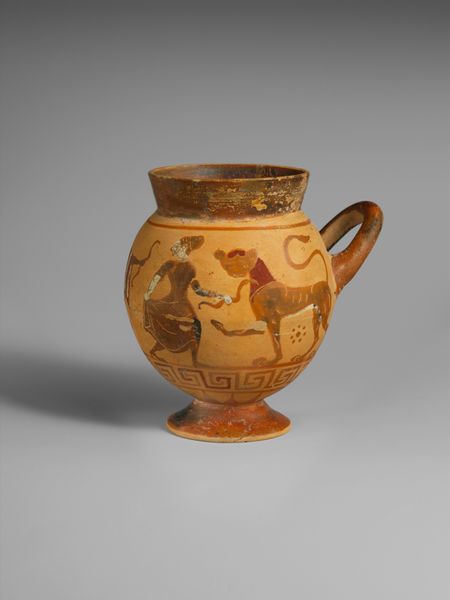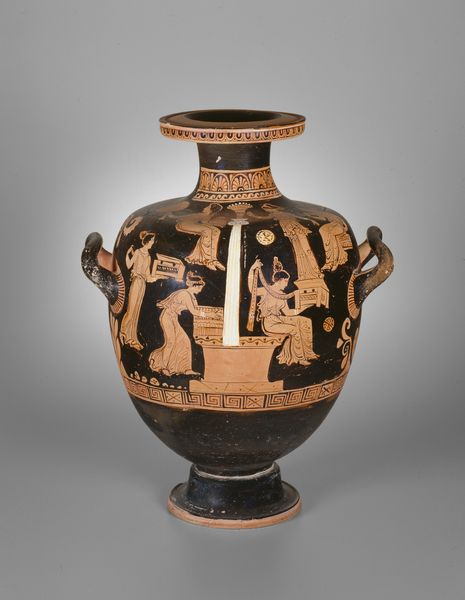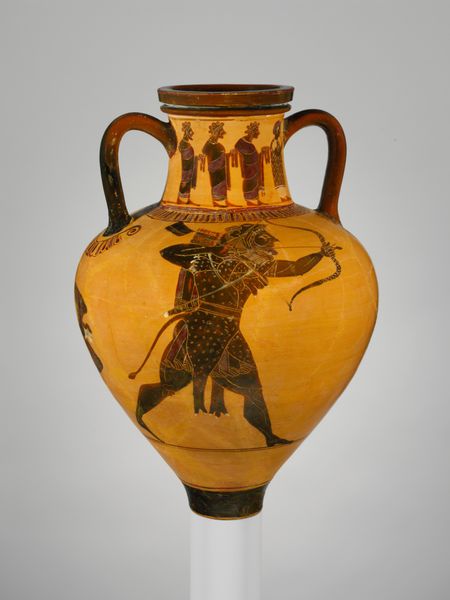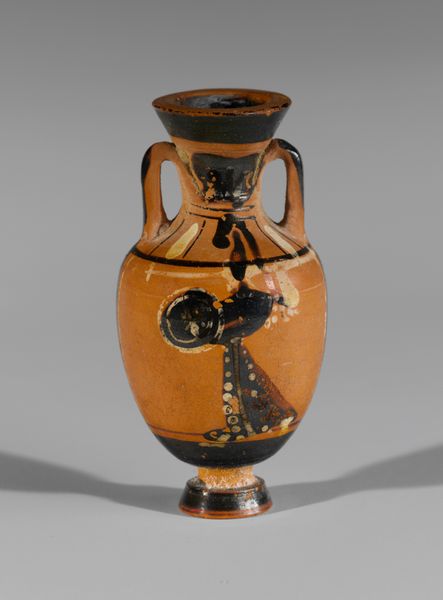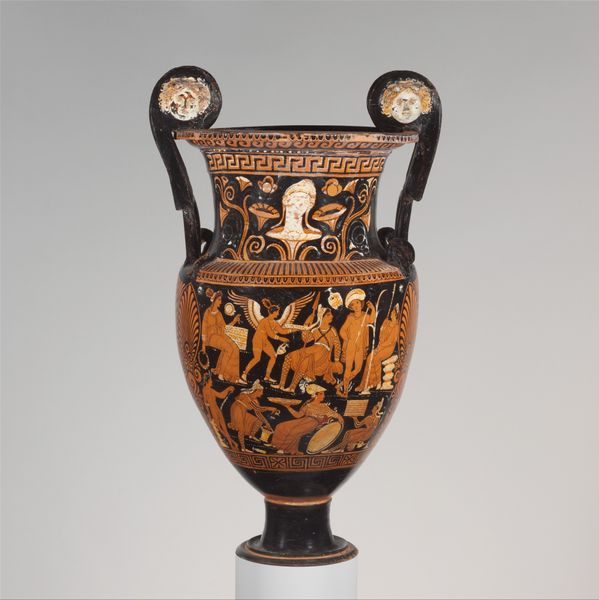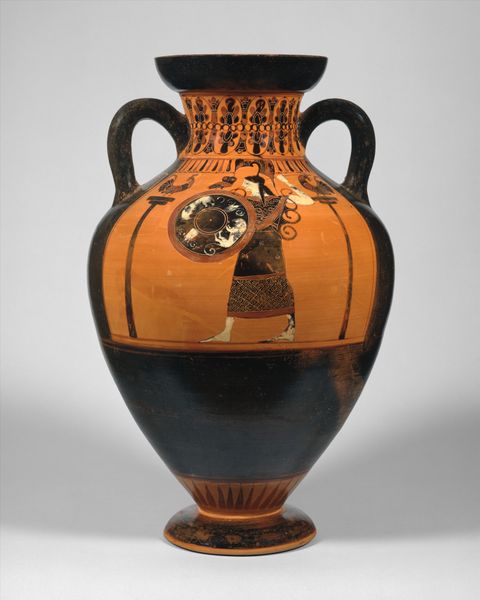
Terracotta kantharos (drinking cup) in the form of the heads of Herakles and of a woman 470 BC
0:00
0:00
ceramic, terracotta
#
portrait
#
head
#
greek-and-roman-art
#
ceramic
#
vase
#
figuration
#
ancient-mediterranean
#
men
#
terracotta
Dimensions: H. 8 1/2 in. (21.6 cm)
Copyright: Public Domain
Curator: Well, this is certainly striking. Editor: Indeed. It has a somewhat unnerving quality to it, wouldn't you say? Those eyes staring straight ahead, and the scale of the heads feels rather imposing. Curator: Absolutely. What we're looking at is a terracotta kantharos, a drinking cup, dating back to around 470 BC. It is a superb example of Greek ceramic art and craftsmanship. The cup is shaped as the heads of Herakles, or Hercules as we know him in the Roman tradition, and a woman. Editor: I’m immediately drawn to the texture of the terracotta, especially considering its age. One has to consider the clay sources, the skill involved in shaping such intricate forms on a potter's wheel, and of course the firing process itself. This wasn’t mass production; it involved highly specialized labor and materials. Curator: Precisely. The cup's dual representation is compelling in terms of the role it might have played in symposia—formalized drinking parties among the elite. To be used during a symposia demonstrates an object for aristocratic use, reflecting power and prestige. Herakles, of course, was elevated to divine status. Editor: So, you see the pairing of Herakles with the female head in terms of reinforcing social hierarchies? Curator: It’s more than just social hierarchies. It’s about the intersection of the human, the divine, and how these categories are negotiated and performed in social rituals, further displaying the cultural influence in these works. Editor: It’s a shame we don't know more about the specific workshop where it was created. The choices that go into creating a drinking vessel in this form are very fascinating when examined in context, from the type of clay they could access, and how that might effect their ability to convey details like the facial features. Curator: But beyond that is also how the imagery on the drinking cup participated in a larger visual culture shaping ancient Greek identity and its reception through the ages. I think we should spend a moment contemplating its impact. Editor: Yes, absolutely. Thinking about the human touch, the social rituals surrounding its use, and how that physical engagement imbued the object with meaning makes one reflect about all the cultural implications contained in one drinking vessel.
Comments
No comments
Be the first to comment and join the conversation on the ultimate creative platform.

